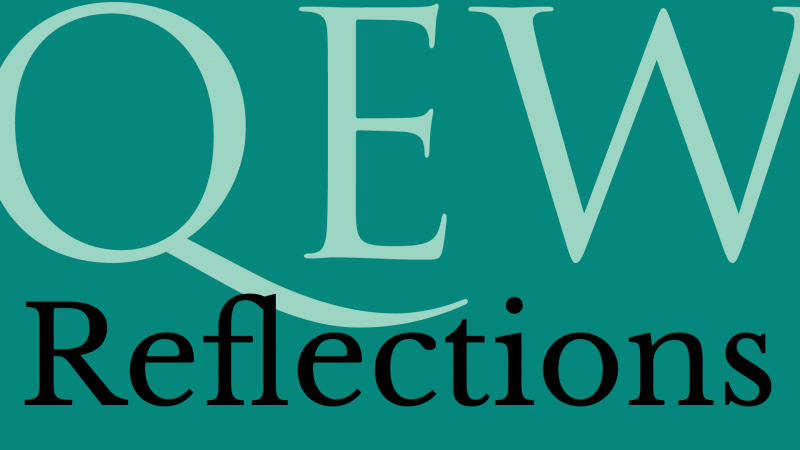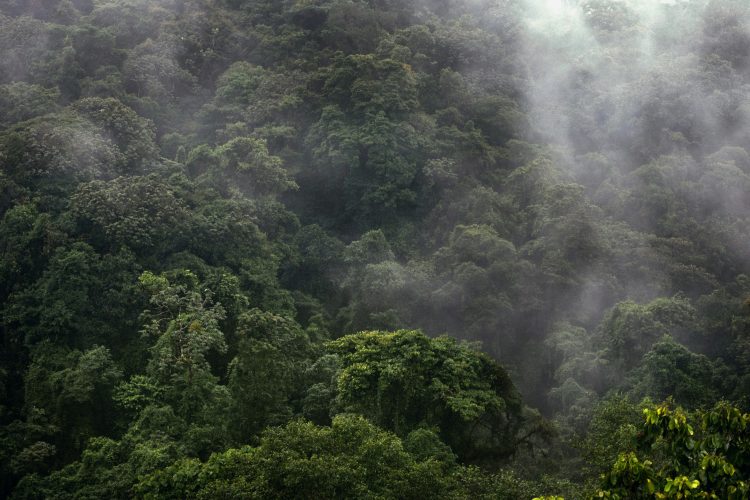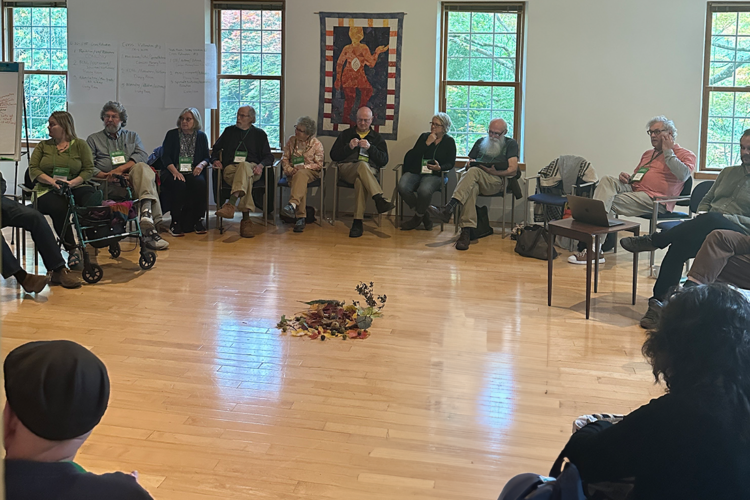Potential Surprises

By Shelley Tanenbaum.
A LARGE GULF EXISTS between those who understand the magnitude of the environmental crisis we are facing and those who, willfully or not, remain unaware and disengaged.
Just look around your community or your meetinghouse. Most people are not necessarily climate deniers or uncaring about the environment. Yet they are in denial. The crises we face—climate, over-population, and over-draft of resources, ocean acidification, collapse of global fisheries, species extinction—are overwhelming.
For the past few years, I have limited how much I talk about the crises, and instead, have tried to focus on solutions and good news (there are plenty of these stories to talk about). My reasoning has been that those of us who are engaged in actions and projects that support our human connection with the environment and eco-justice are already motivated, so more enviro-horror stories plunge us into despair, not forward movement. However, crises are mounting and solutions are piecemeal. More of us are needed to join the ranks of enviro-warriors if we have any hope of shifting society towards living in harmony with “our common home” as Pope Francis likes to call our Earth.
So, share this story and this issue of Befriending Creation with everyone you know and invite them to join you in your good work. We have time, but not much, to make a significant difference with our actions. Our Earth will be fine no matter what we do; the planet has experienced extremes in climate/weather and population of species. The big question for us in our time is how many humans and other species will be able to thrive on the planet, and who will bear the brunt of environmental/climate disruption. Timing is critical; the window to act is rapidly shrinking.
Two November 2017 publications are good summaries of the state of the environment. The Fourth National Climate Assessment describes the state of global climate disruption, likely impacts especially within the United States, and possible scenarios for limiting global warming. The report was released about a year ago in draft form and is now an official government document, clearly stating that the bulk of climate disruption that we are experiencing is caused by human activity.
The report documents a scientific consensus that we need to limit global warming to 2 degrees Celsius (C) or the “risks of grave damage to ecosystems, and non-linear responses, are expected to increase rapidly.” Island nations and low-lying areas would add that the limit needs to be 1.5 degrees C to avoid grave damage in their areas.
The startling findings that I am taking away from the report are:
- To stay below a 2 degrees temperature rise, carbon emissions must peak by 2020, be cut 50 percent by 2040 and achieve net zero by 2080;
- The report does not seriously consider scenarios that would limit global temperature rise to 1.5 degrees C;
- Carbon emissions that are already in the atmosphere (emitted over more than the past century, beyond the natural carbon cycle) will remain in the carbon cycle for decades, with 15-40 percent sticking around for 1000 years unless we figure out a way to remove them;
There are likely many interactions between all climate-change impacts (ie, drought, extreme weather, sea-level rise) that will magnify the chaos.
This last set of findings in the report is entitled “Potential Surprises.” It is chilling to hear scientists use the words “Potential Surprises” to describe our future. They have no idea how the effects of climate change will snowball, feedback-loop, escalate exponentially, or go beyond known extremes. They do know that all our current climate-prediction models underestimate results.
The second publication is a call to action issued from 16,000 (and growing) scientists to change our ways regarding environmental degradation, entitled World Scientists’ Warning to Humanity: A Second Notice. The “Warning to Humanity” was originally issued 25 years ago by 1700 scientists. The warning highlights scary statistics about fresh-water resources, dead zones in the ocean, forest declines, vertebrate species declines, human population and increases in carbon emissions and temperature.
The only improvement in the past 25 years serves as a model for what we can achieve when we have the political will to do so. You might remember that we used to worry about the ‘ozone hole,’ a gap in the ozone layer of the stratosphere that shields us from harmful ultra-violet solar rays. We have now successfully removed significant ozone-depleting pollutants, and the ‘hole’ is shrinking (ozone is a big problem in the lower atmosphere, but that is another story). We (meaning humanity) adopted the Montreal Protocol in 1987, that phased out ozone-depleting pollutants. It worked!
Your work is needed more than ever. You are not alone.

